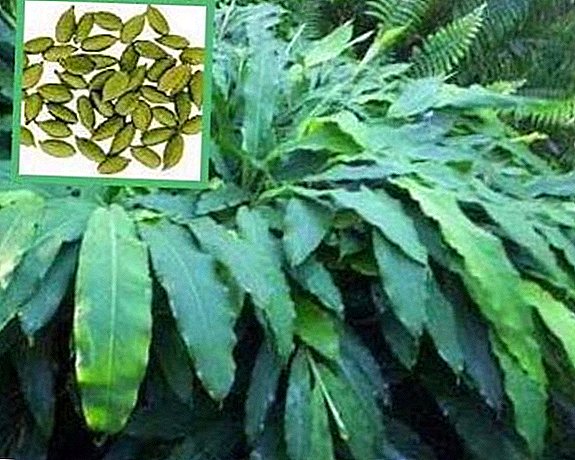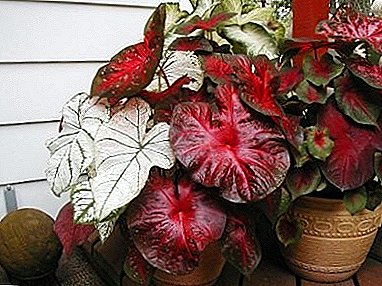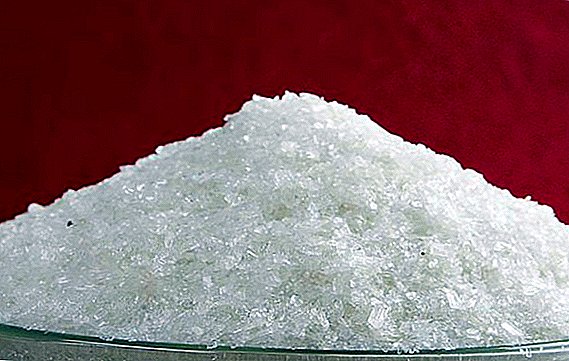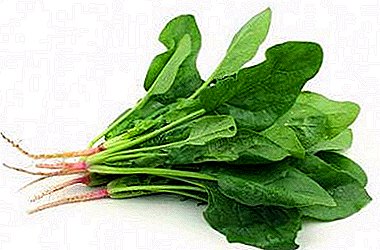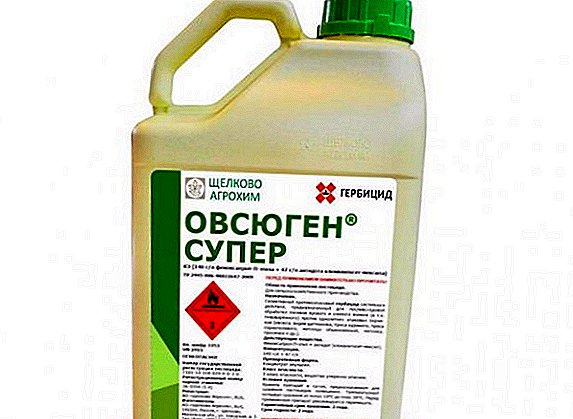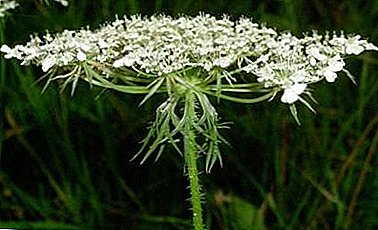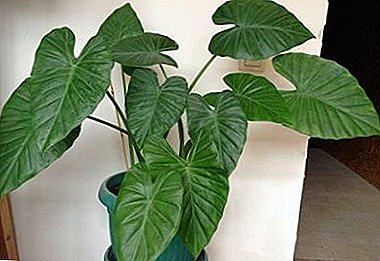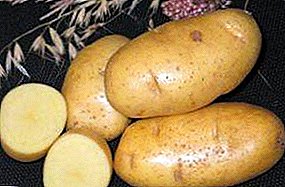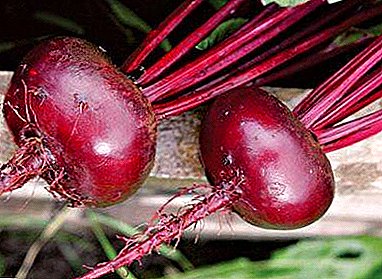
Among the varieties of beet growers that are popular among gardeners, the variety called "Egyptian flat" is very popular.
This variety is table, that is, its main purpose is considered to be food. Gardeners choose this particular variety due to high yield, pleasant dessert taste and resistance to adverse conditions.
This article will provide all the useful information about this variety. You will learn what this vegetable looks like, its advantages and disadvantages, the rules of planting this variety and much more.
Appearance Description
The dense crown of a small erect shrub consists of leaves of a rich dark green color. Fruits differ slightly flattened rounded flat shape. and a small head. The weight of one beet colored maroon varies from three hundred to five hundred grams. The color of bright red tender flesh in some places turns into a purple hue.
The uniform consistency of the pulp eliminates the presence of white veins, which significantly degrade the quality of the beets. The core of the fruit is characterized by a crimson-red shade. The taste is rich in juice sweetish vegetables. From one square meter of planting you can collect from five to eight kilograms of harvest, which means that from a hectare of planting you get from 50 to 80 thousand kilograms of fruit.
Exact indicators depend on manufacturers of planting material. On the bushes "Egyptian flat" first appear ovaries relative to other beet varieties. The percentage of seed germination is very high - about eighty. "Egyptian flat" is a variety with an average maturity of 101 to 128 days.
When cultivated in more favorable conditions, the roots can ripen within 90 days. The variety can be cultivated for commercial purposes, because the roots are perfectly tolerate transportation, without losing an attractive appearance.
Plant photo
Here you can see photos of beets:



Breeding history
The variety of red beet called "Egyptian flat" was bred in 1943 Scientists who worked at the Research Institute of Agriculture of the Central Black Earth strip named after V.V. Dokuchaeva. The basis for the new beet varieties served as foreign varieties.
The resulting variety is suitable for cultivation in the Volga, East Siberian, Central and Central Black Earth regions of the country. Also the variety is recommended for cultivation in Kyrgyzstan, Tajikistan, Ukraine and Armenia. Over the past years, the variety has been repeatedly improved, acquiring new positive qualities.
What is the difference from other varieties?
Experimentally and due to observations, features of the variety were identified. The bushes that emerged from the seeds are actively developing and growing rapidly.picking up volume. Of two grams of seed, you can grow a large garden, consisting of four rows.
Advantages and disadvantages
Advantages:
- rich color and pleasant sweetish taste of root vegetables;
- pulp of a uniform consistence, lack of veins of white color;
- at first glance, the flat shape does not look aesthetically pleasing, but has several advantages: it is convenient to put root vegetables in a pan or in a storage container, and it is also easier to chop;
- resistance to drought and tsvetushnosti.
Disadvantages:
- small fruits may dry out during storage and may not survive to the end of winter;
- sometimes germination drops to fifty percent, this is affected by the seed producer and the conditions in which they were kept and sown.
What and where is it used for?
The roots of the "Egyptian flat" suitable for universal use. They can be consumed fresh, as well as canned and added to dishes. Beets of this variety make excellent juices and vegetable purees. Young leaves of beetroot outlets are also used for culinary purposes, adding to salads and soups.
Step-by-step instructions for planting and care
 The plant is two years old, but it is cultivated as an annual, as the fruits reach full maturity four months after planting. Bushes are left for the second year to get seeds from them.
The plant is two years old, but it is cultivated as an annual, as the fruits reach full maturity four months after planting. Bushes are left for the second year to get seeds from them.
"Egyptian flat" is cultivated in all regions of Russia, as it tolerates drought and low temperatures well. You can buy seeds in garden shops or in online stores at an average cost of twenty rubles for a small bag.
When grown in areas with warm climates, seeds are placed in open ground in March, the deadline for cold regions is shifted to May. The average daily air temperature should not fall below eight degrees. Autumn planting is not popular, since winter frosts and return spring frosts can destroy the first shoots.
Ten or twelve grams of seeds are sown on a plot of ten square meters. Observe the rules of crop rotation, so beets are planted in the area where cabbage, cucumbers or tomatoes were previously grown. The place should be well lit so that the gardener can get the maximum amount of the crop at the exit.
The ideal option is a soil with a neutral acidity. Weak acidic land is made suitable by adding ash or lime. Acid soils are not suitable for growing beets, but acidity can be neutralized with lime and boron fertilizers.
Alkaline soil is acidified, making compost consisting of maple and oak leaves, peat moss and pine and spruce needles. If you do not optimize the alkaline soil for growing "Egyptian flat", the fruits will begin to rot. Planting pits prepared in the fall. They dig up the earth and fertilize it.
The landing process includes the following steps:
- To begin with, seeds are prepared. Selected whole specimens of large size, without damage. Seeds harden, pouring them with warm water, then placing on the bottom shelf of the refrigerator for a week.
- In the selected area make the beds with an interval of twenty centimeters.
- Planting material is placed in the ground, deepening three centimeters, leaving a distance of ten centimeters to the next seed.
- If sowing is done in a cold region, sow necessarily in the greenhouse.
 Temperature.
Temperature.The optimum temperature for germinating seeds is ten degrees. Shoots can be seen after 23 days. The maximum temperature for germination is 26 degrees, a further increase has a negative effect on planting.
Culture watered abundantly, trying not to flood and keep in a state of drought, which adversely affects the formation of fruits. Water the bushes in the evening to avoid burns due to moisture on the leaves. On a hot day, the water evaporates quickly, so the culture does not have time to fully fill. When the fruits begin to form, the frequency of watering increases.
The first time the seedlings are fed at the stage of appearance of the fourth leaf, using nitrogen-rich fertilizers. The second time the culture is fertilized during the formation of the fruit, introducing potassium and phosphorus into the soil.
After each watering, the soil must be loosened and mulched so that the moisture lingers longer in the ground. Such procedures also help to avoid the active growth of weeds.
Harvesting and storage
- Three weeks before the harvest, the beets are no longer watered.
- As soon as the fruits ripen, begin harvesting, which is carried out in warm weather without rain.
- The bushes are pulled out of the loose earth, out of the hard soil they are pulled out with the help of a pitchfork.
- Fruits are dried and cleaned from the earth. The tops cut off.
- Root crops are stored in the cellars, placed in boxes of wood and pouring river sand.
The grade is characterized by high keeping quality, under certain storage conditions, the fruit can perfectly lie until March, without losing its beneficial properties and attractive appearance. Most often, "Egyptian flat" beets are eaten in autumn and winter.
Diseases and pests
The variety "Egyptian flat" is resistant to diseases and pests, however, if agrotechnical conditions are violated, the bushes can get sick. The variety is considered to be resistant to the main diseases of the beet crop: fomose and cerkosporoze.
If you carry out deep tillage in a timely manner, as well as get rid of weeds and damaged parts of the beet bush in time, you can avoid the invasion of a bear, flies and bedbugs.
Prevention of various problems
In order for the bushes to actively develop and form healthy and strong fruits, it is necessary to strictly follow the rules of agricultural engineering. Observance of growing conditions is the best prevention of any problems..
"Egyptian flat" - a table variety of beets of excellent quality. Gardeners are attracted by the pleasant taste, lack of white streaks, as well as high yield.


